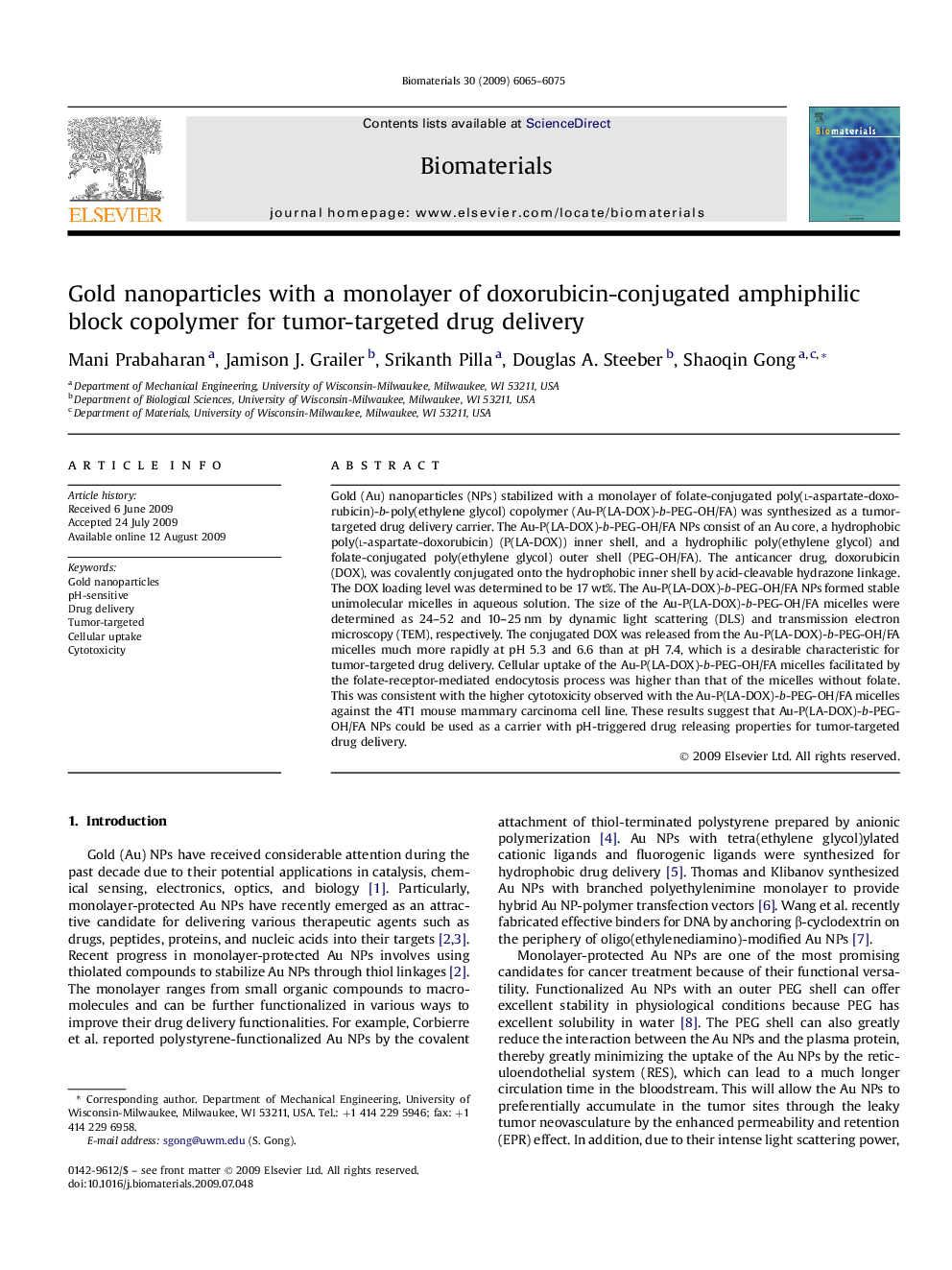| Article ID | Journal | Published Year | Pages | File Type |
|---|---|---|---|---|
| 9749 | Biomaterials | 2009 | 11 Pages |
Gold (Au) nanoparticles (NPs) stabilized with a monolayer of folate-conjugated poly(l-aspartate-doxorubicin)-b-poly(ethylene glycol) copolymer (Au-P(LA-DOX)-b-PEG-OH/FA) was synthesized as a tumor-targeted drug delivery carrier. The Au-P(LA-DOX)-b-PEG-OH/FA NPs consist of an Au core, a hydrophobic poly(l-aspartate-doxorubicin) (P(LA-DOX)) inner shell, and a hydrophilic poly(ethylene glycol) and folate-conjugated poly(ethylene glycol) outer shell (PEG-OH/FA). The anticancer drug, doxorubicin (DOX), was covalently conjugated onto the hydrophobic inner shell by acid-cleavable hydrazone linkage. The DOX loading level was determined to be 17 wt%. The Au-P(LA-DOX)-b-PEG-OH/FA NPs formed stable unimolecular micelles in aqueous solution. The size of the Au-P(LA-DOX)-b-PEG-OH/FA micelles were determined as 24–52 and 10–25 nm by dynamic light scattering (DLS) and transmission electron microscopy (TEM), respectively. The conjugated DOX was released from the Au-P(LA-DOX)-b-PEG-OH/FA micelles much more rapidly at pH 5.3 and 6.6 than at pH 7.4, which is a desirable characteristic for tumor-targeted drug delivery. Cellular uptake of the Au-P(LA-DOX)-b-PEG-OH/FA micelles facilitated by the folate-receptor-mediated endocytosis process was higher than that of the micelles without folate. This was consistent with the higher cytotoxicity observed with the Au-P(LA-DOX)-b-PEG-OH/FA micelles against the 4T1 mouse mammary carcinoma cell line. These results suggest that Au-P(LA-DOX)-b-PEG-OH/FA NPs could be used as a carrier with pH-triggered drug releasing properties for tumor-targeted drug delivery.
